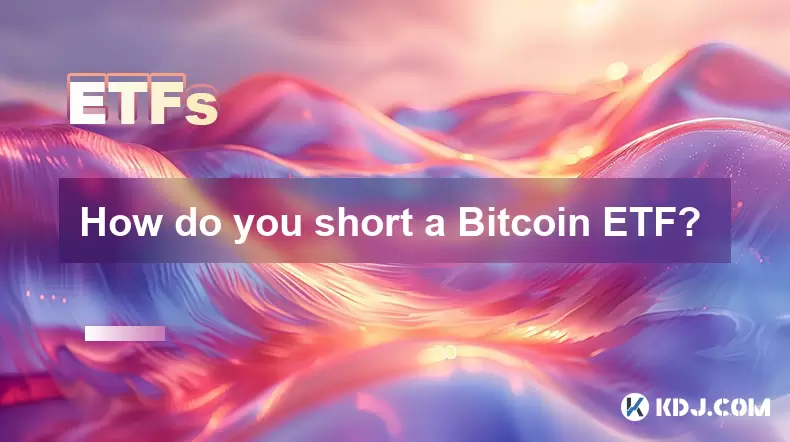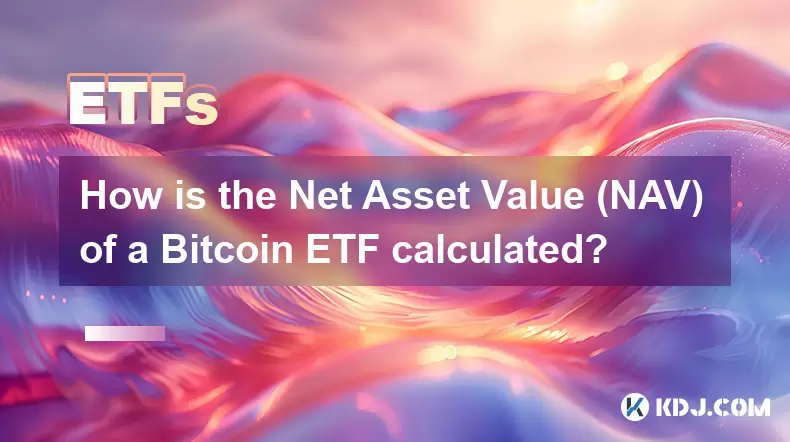-
 Bitcoin
Bitcoin $111,548.1016
2.37% -
 Ethereum
Ethereum $2,781.2216
6.39% -
 Tether USDt
Tether USDt $1.0004
0.01% -
 XRP
XRP $2.4146
4.58% -
 BNB
BNB $669.5226
1.36% -
 Solana
Solana $157.5751
3.99% -
 USDC
USDC $1.0002
0.02% -
 TRON
TRON $0.2899
0.84% -
 Dogecoin
Dogecoin $0.1821
6.47% -
 Cardano
Cardano $0.6259
6.40% -
 Hyperliquid
Hyperliquid $41.0040
5.60% -
 Sui
Sui $3.0919
6.42% -
 Bitcoin Cash
Bitcoin Cash $515.6573
2.88% -
 Chainlink
Chainlink $14.3144
2.51% -
 Stellar
Stellar $0.2885
11.60% -
 UNUS SED LEO
UNUS SED LEO $8.9746
-1.18% -
 Avalanche
Avalanche $19.5761
6.62% -
 Shiba Inu
Shiba Inu $0.0...01245
4.98% -
 Hedera
Hedera $0.1711
6.23% -
 Toncoin
Toncoin $2.8451
1.64% -
 Litecoin
Litecoin $91.0395
3.67% -
 Monero
Monero $324.5650
2.52% -
 Polkadot
Polkadot $3.6332
5.42% -
 Dai
Dai $1.0001
0.01% -
 Ethena USDe
Ethena USDe $1.0011
0.03% -
 Uniswap
Uniswap $8.4471
10.54% -
 Bitget Token
Bitget Token $4.4085
1.61% -
 Pepe
Pepe $0.0...01117
9.51% -
 Aave
Aave $303.3870
3.43% -
 Pi
Pi $0.4715
2.67%
How to find real-time data on Bitcoin ETF fund flows?
Jul 09, 2025 at 09:28 am

Understanding Bitcoin ETF Fund Flows
Bitcoin Exchange-Traded Funds (ETFs) have become a popular way for investors to gain exposure to Bitcoin without directly holding the cryptocurrency. Real-time data on Bitcoin ETF fund flows refers to the movement of capital into or out of these ETFs at any given moment. This information is crucial for understanding investor sentiment and market dynamics surrounding Bitcoin.
Why Real-Time Data Matters
For traders and institutional investors, tracking real-time fund flows can provide insights into market trends and potential price movements. When large inflows occur, it may indicate growing confidence in Bitcoin’s value. Conversely, significant outflows could signal uncertainty or bearish sentiment. Accessing this data helps investors make informed decisions based on current market behavior rather than outdated reports.
Sources for Real-Time Bitcoin ETF Flow Data
Several platforms offer real-time tracking of Bitcoin ETF fund flows. One of the most commonly used tools is Bloomberg ETF Analytics, which provides detailed breakdowns of inflows and outflows across various ETFs, including those tied to Bitcoin. Another reliable source is Morningstar Direct, which offers institutional-grade data on asset flows and fund performance.
Additionally, CoinShares’ Insights Dashboard provides live updates on digital asset fund flows, including Bitcoin ETFs. These platforms often include visualizations that allow users to monitor changes over time and compare different funds side by side.
How to Use Bloomberg ETF Analytics for Bitcoin ETF Tracking
To access real-time flow data using Bloomberg:
- Open the Bloomberg Terminal and type “ETFG” to launch the ETF analytics module.
- Search for Bitcoin-related ETFs such as IBIT, ARKK, or BITO.
- Select the specific ETF you want to analyze.
- Navigate to the “Flows” tab, where real-time net asset value (NAV) changes and daily inflows/outflows are displayed.
- Customize the time frame to view data from the past 24 hours, week, or month.
This process allows users to see how much money is moving in and out of Bitcoin ETFs at any given time, helping them gauge short-term market sentiment.
Utilizing CoinShares for Digital Asset Fund Flow Monitoring
CoinShares offers a public-facing dashboard that tracks institutional investment flows into crypto assets. To use this tool effectively:
- Visit the CoinShares Institutional Research page.
- Look for the section labeled “Fund Flows.”
- Click into the interactive charts that show weekly and daily net inflows into Bitcoin ETFs and ETPs.
- Filter by asset class to isolate Bitcoin-specific flows.
- Review accompanying commentary and analysis for context behind the numbers.
This platform is especially useful for investors who want to track institutional activity without needing access to expensive financial terminals.
Tips for Interpreting Real-Time Flow Data
When analyzing real-time fund flows, it’s important to understand what the numbers represent. Large inflows might suggest increased demand, but they should be cross-referenced with price action to confirm whether buying pressure is translating into higher prices. Similarly, sudden outflows may not always result in immediate price drops if other market forces are at play.
Another key consideration is the size of the ETF relative to its inflows or outflows. A small ETF experiencing a large percentage inflow might not have the same impact as a major fund seeing similar movements. Investors should also pay attention to the timing of flows—end-of-day figures might differ significantly from intraday movements due to market volatility.
Frequently Asked Questions
Q: Can I get real-time Bitcoin ETF flow data for free?
A: Yes, platforms like CoinShares and some sections of Bloomberg offer limited real-time data for free. However, full access to advanced features typically requires a subscription or institutional account.
Q: How accurate is real-time ETF flow data?
A: Real-time data from reputable sources like Bloomberg or Morningstar is highly accurate, though slight delays or discrepancies can occur depending on the provider and data feed used.
Q: What does a sudden outflow from a Bitcoin ETF mean?
A: A sudden outflow may reflect short-term investor caution, profit-taking, or shifting market sentiment. It doesn’t necessarily predict long-term trends without additional context from broader market indicators.
Q: Are Bitcoin ETF flows reported globally or regionally?
A: Most platforms report flows on a per-fund basis, which can be global or regional depending on the ETF’s listing and investor base. For example, U.S.-listed ETFs primarily reflect North American investor behavior.
Clause de non-responsabilité:info@kdj.com
Les informations fournies ne constituent pas des conseils commerciaux. kdj.com n’assume aucune responsabilité pour les investissements effectués sur la base des informations fournies dans cet article. Les crypto-monnaies sont très volatiles et il est fortement recommandé d’investir avec prudence après une recherche approfondie!
Si vous pensez que le contenu utilisé sur ce site Web porte atteinte à vos droits d’auteur, veuillez nous contacter immédiatement (info@kdj.com) et nous le supprimerons dans les plus brefs délais.
-
 M Échangez maintenant
M Échangez maintenant$0.3586
79.06%
-
 BANANAS31 Échangez maintenant
BANANAS31 Échangez maintenant$0.0251
32.55%
-
 USELESS Échangez maintenant
USELESS Échangez maintenant$0.3210
23.48%
-
 ZBCN Échangez maintenant
ZBCN Échangez maintenant$0.0036
23.02%
-
 ETHFI Échangez maintenant
ETHFI Échangez maintenant$1.12
19.46%
-
 SATS Échangez maintenant
SATS Échangez maintenant$0.0...04446
16.47%
- Réseau Pi: alimenter l'économie mondiale et l'avenir avec l'IA
- 2025-07-10 12:50:12
- Crypto Hack: GMX Bounty offert après un drain de 42 millions de dollars
- 2025-07-10 12:50:12
- Crypto Liquidations and Bitcoin's Wild Ride: quelle est la prochaine étape?
- 2025-07-10 12:30:12
- Bitcoin explose à un niveau record: l'élan institutionnel est-il la vraie affaire?
- 2025-07-10 13:10:12
- Bitcoin's Wild Ride: les sommets record et les surtensions des prix expliqués
- 2025-07-10 13:10:12
- Cloud Mining en 2025: Top Plateforme pour les gains passifs Bitcoin & Altcoin
- 2025-07-10 13:15:11
Connaissances connexes

Bitcoin ETF vs acheter Bitcoin sur une échange comme Coinbase
Jul 09,2025 at 10:15am
Qu'est-ce qu'un ETF Bitcoin? Un ETF Bitcoin (Fonds négocié en bourse) est un produit financier qui suit le prix de Bitcoin sans obliger les in...

Comment court-vous un ETF Bitcoin?
Jul 09,2025 at 06:14pm
Comprendre les bases de la court-circuit d'un ETF Bitcoin Le court-circuit d'un fonds de bourse (K_1] (ETF) implique de paris que le prix de l...

Les ETF Bitcoin sont-ils couverts par l'assurance SIPC?
Jul 09,2025 at 05:56am
Qu'est-ce que l'assurance SIPC? SIPC Insurance , officiellement connu sous le nom de Securities Investor Protection Corporation (SIPC) , est u...

Comment suivre les flux ETF en temps réel Bitcoin?
Jul 09,2025 at 12:56pm
Qu'est-ce qu'un ETF Bitcoin et pourquoi suivre ses flux? Un fonds de bourse Bitcoin (ETF) permet aux investisseurs de se faire exposition à Bi...

Comment la valeur de l'actif net (NAV) d'un ETF Bitcoin est-elle calculée?
Jul 09,2025 at 11:56pm
Comprendre la valeur de l'actif net (NAV) d'un ETF Bitcoin La valeur de l'actif net (NAV) est une métrique critique pour tout fonds négoci...

Y a-t-il des options de négociation sur Bitcoin ETF?
Jul 10,2025 at 12:01pm
Comprendre Bitcoin ETF et leur rôle de marché Bitcoin Les fonds négociés en bourse (ETF) sont des véhicules d'investissement qui suivent le prix d...

Bitcoin ETF vs acheter Bitcoin sur une échange comme Coinbase
Jul 09,2025 at 10:15am
Qu'est-ce qu'un ETF Bitcoin? Un ETF Bitcoin (Fonds négocié en bourse) est un produit financier qui suit le prix de Bitcoin sans obliger les in...

Comment court-vous un ETF Bitcoin?
Jul 09,2025 at 06:14pm
Comprendre les bases de la court-circuit d'un ETF Bitcoin Le court-circuit d'un fonds de bourse (K_1] (ETF) implique de paris que le prix de l...

Les ETF Bitcoin sont-ils couverts par l'assurance SIPC?
Jul 09,2025 at 05:56am
Qu'est-ce que l'assurance SIPC? SIPC Insurance , officiellement connu sous le nom de Securities Investor Protection Corporation (SIPC) , est u...

Comment suivre les flux ETF en temps réel Bitcoin?
Jul 09,2025 at 12:56pm
Qu'est-ce qu'un ETF Bitcoin et pourquoi suivre ses flux? Un fonds de bourse Bitcoin (ETF) permet aux investisseurs de se faire exposition à Bi...

Comment la valeur de l'actif net (NAV) d'un ETF Bitcoin est-elle calculée?
Jul 09,2025 at 11:56pm
Comprendre la valeur de l'actif net (NAV) d'un ETF Bitcoin La valeur de l'actif net (NAV) est une métrique critique pour tout fonds négoci...

Y a-t-il des options de négociation sur Bitcoin ETF?
Jul 10,2025 at 12:01pm
Comprendre Bitcoin ETF et leur rôle de marché Bitcoin Les fonds négociés en bourse (ETF) sont des véhicules d'investissement qui suivent le prix d...
Voir tous les articles

























































































